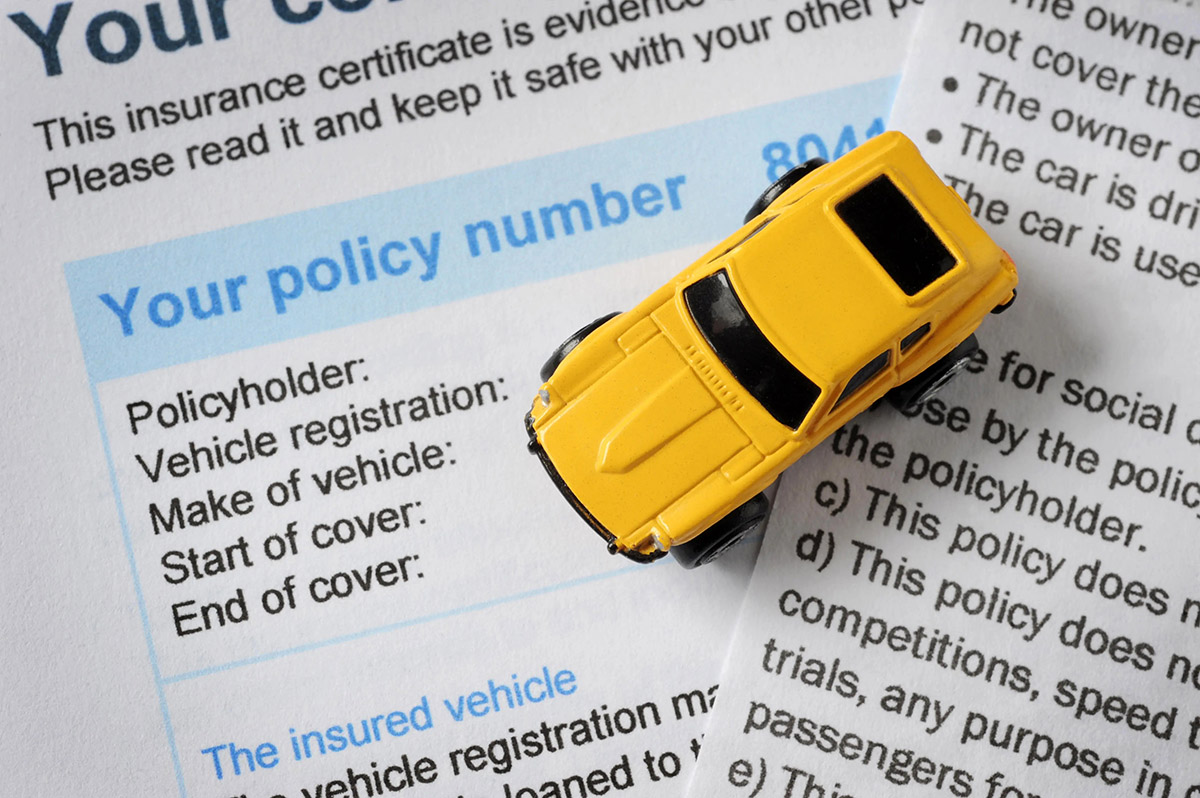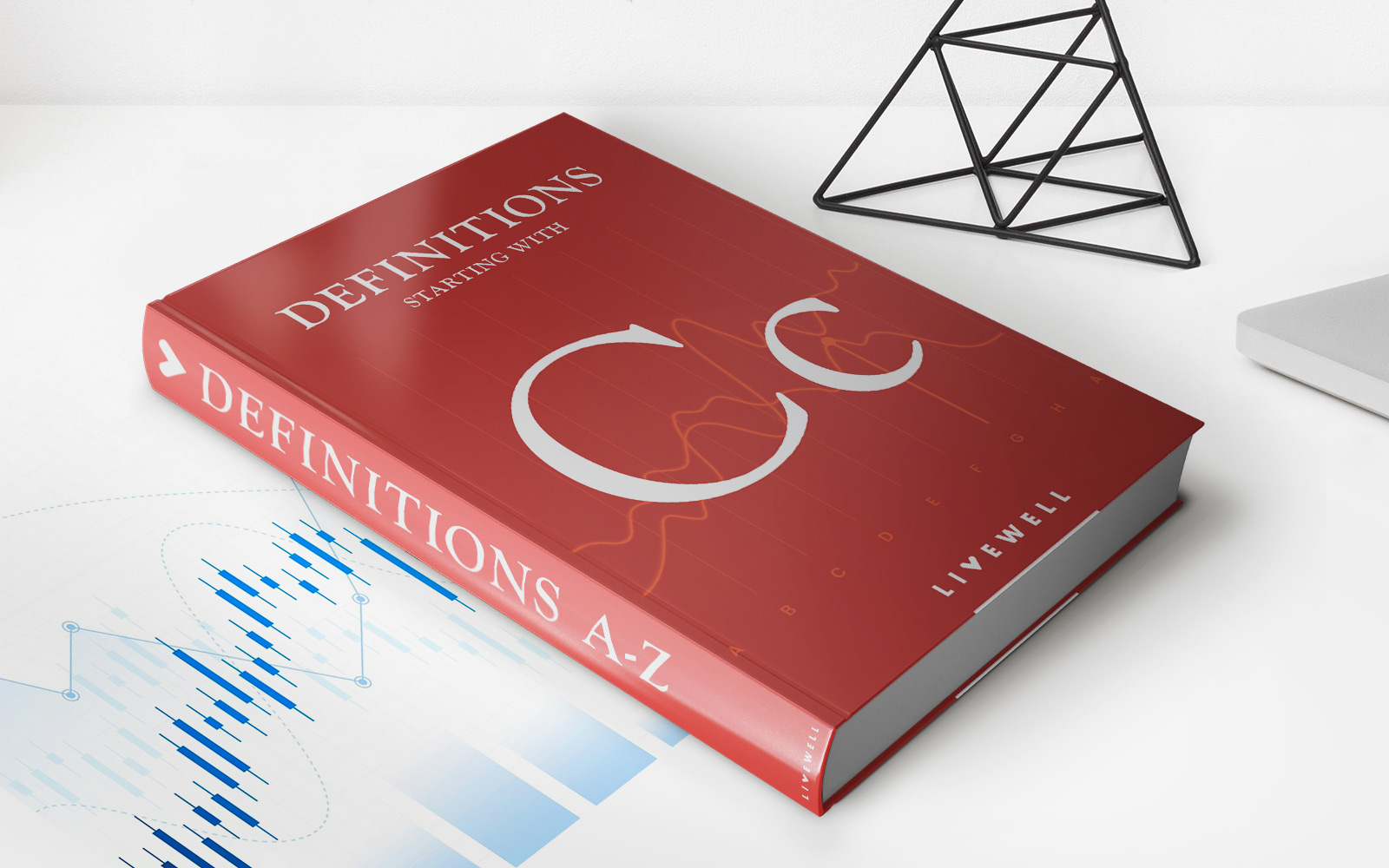

Finance
How To Find An Insurance Effective Date
Modified: March 1, 2024
Looking for an effective date for your insurance? Learn how to find it and ensure your finance is properly protected.
(Many of the links in this article redirect to a specific reviewed product. Your purchase of these products through affiliate links helps to generate commission for LiveWell, at no extra cost. Learn more)
Table of Contents
- Introduction
- Understanding Insurance Effective Dates
- Importance of Knowing the Effective Date
- Ways to Find an Insurance Effective Date
- Method 1: Checking Insurance Policy Document
- Method 2: Contacting Insurance Agent or Company
- Method 3: Reviewing Insurance Application
- Method 4: Online Account or App
- Method 5: Credit Card or Bank Statement
- Method 6: Communication or Confirmation Emails
- Method 7: Insurance Card or Documents
- Conclusion
Introduction
Insurance is a vital component of financial planning, providing protection and peace of mind in times of unexpected events. Whether it’s auto, home, health, or life insurance, having the right coverage can help mitigate financial risks and safeguard our assets. When purchasing insurance, one crucial aspect to consider is the effective date.
The effective date of an insurance policy refers to the date when the coverage begins and becomes active. It is the starting point from which the policyholder can make claims, file for reimbursements, or seek financial assistance in case of covered incidents. Understanding and keeping track of this date is essential for policyholders to ensure continuous coverage and avoid any gaps in protection.
In this article, we will delve into the significance of knowing the effective date of an insurance policy and explore various methods to find it. Whether you’re a new policyholder or simply curious about your existing coverage, these methods will help you easily determine the effective date of your insurance policy.
Understanding Insurance Effective Dates
The effective date of an insurance policy is the specific date on which the coverage begins. It is the point in time when the policyholder becomes eligible to make claims or receive benefits according to the terms of the policy. It is crucial to understand this date as it determines when your insurance coverage is active and when you are protected against specific risks.
Insurance policies can have different effective date structures. Some policies have a specific start date, while others may have a retroactive date that provides coverage for incidents that occurred before the policy’s inception. It is essential to review your policy documents to understand the specific effective date provisions.
Policyholders need to be aware of the distinction between the effective date and the effective date of coverage. The effective date refers to when the policy begins, while the effective date of coverage indicates when the coverage for a particular incident starts. For example, if you have car insurance with an effective date of February 1st but get into an accident on February 10th, your coverage for that incident will begin on February 1st.
It’s also important to note that the effective date can vary depending on the type of insurance. For example, auto insurance policies typically have an effective date that aligns with the date of purchase, while health insurance effective dates can coincide with the start of a new month or a specific enrollment period.
Understanding the effective date of your insurance policy is crucial for ensuring uninterrupted coverage. It allows you to plan accordingly to activate your policy at the designated time and make informed decisions regarding your insurance needs.
Importance of Knowing the Effective Date
Knowing the effective date of your insurance policy is of utmost importance for several reasons:
1. Coverage Start Date: The effective date signifies when your insurance coverage starts. It is crucial to have this information to understand when you are protected against potential risks and can make claims or seek reimbursement for covered incidents. Without knowing the effective date, you may inadvertently assume you are covered when in fact your policy has not yet become active.
2. Policy Renewal: Understanding the effective date is essential for policy renewal purposes. It allows you to plan ahead and ensure that your coverage does not lapse. By knowing the exact date when your policy expires, you can take proactive steps to renew it in a timely manner and maintain continuous protection.
3. Policy Exclusions and Waiting Periods: Some insurance policies may have exclusions or waiting periods before certain coverage becomes effective. By knowing the effective date, you can determine if any waiting periods are applicable and be aware of any specific incidents or conditions that may not be covered during those waiting periods. Having this information helps you manage your expectations and make informed decisions regarding your insurance needs.
4. Coordination with Other Insurance Policies: If you have multiple insurance policies, such as home and auto insurance, knowing the effective date is crucial for coordinating coverage. By understanding when each policy begins, you can ensure that there are no gaps or overlaps in your insurance protection. This knowledge allows you to effectively manage and optimize your coverage across different policies.
5. Compliance with Legal Requirements: In some cases, having active insurance coverage is a legal requirement. For instance, auto insurance is mandatory in many jurisdictions. By knowing the effective date of your insurance policy, you can ensure that you are compliant with the law and avoid any potential penalties or legal issues that may arise from being uninsured.
Overall, understanding the effective date of your insurance policy is essential for ensuring continuous coverage, managing your insurance needs, and protecting yourself against potential risks. It allows you to plan ahead, make informed decisions, and comply with any legal requirements associated with your insurance coverage.
Ways to Find an Insurance Effective Date
There are several methods you can use to find the effective date of your insurance policy. Here are seven common ways:
- Checking Insurance Policy Document: The most straightforward way to find the effective date is by reviewing your insurance policy document. This document provides comprehensive information about your coverage, including the specific date when the policy becomes active.
- Contacting Insurance Agent or Company: If you are unable to locate the effective date in your policy document, contacting your insurance agent or company directly can provide you with the necessary information. They will be able to access your policy details and clarify any questions you may have about the effective date.
- Reviewing Insurance Application: The insurance application you filled out when purchasing the policy usually contains the effective date. Going through your application paperwork can help you identify the start date of your coverage.
- Online Account or App: Many insurance companies provide online platforms or mobile apps that allow policyholders to manage their accounts. Logging into your online account or using the company’s mobile app can provide you with access to your policy details, including the effective date.
- Credit Card or Bank Statement: If you pay for your insurance premiums through a credit card or bank account, reviewing your credit card or bank statements can help you determine the effective date. These statements often detail the transactions and dates related to your insurance policy payments.
- Communication or Confirmation Emails: When you first purchased your insurance policy, you may have received communication or confirmation emails. These emails often contain important policy details, including the effective date. Reviewing your email history can help you find the necessary information.
- Insurance Card or Documents: If you have physical copies of your insurance card or other insurance documents, such as declarations pages or coverage summaries, the effective date is typically included. Check these documents for the relevant information.
By utilizing these methods, you can easily find the effective date of your insurance policy. It’s essential to have this information readily available to ensure continuous coverage and to manage your insurance needs effectively.
Method 1: Checking Insurance Policy Document
One of the most reliable ways to find the effective date of your insurance policy is by checking the policy document itself. This document contains all the essential details about your coverage, including the specific date when the policy becomes active.
To locate the effective date in your insurance policy document, follow these steps:
- Retrieve your physical copy or access your digital version of the insurance policy document. This document is typically provided to you by the insurance company when you initially purchase the policy.
- Read through the document thoroughly, paying close attention to the sections that provide information about the policy’s effective date and start of coverage. Look for phrases such as “Effective Date,” “Commencement Date,” or “Start Date.”
- Note down the date mentioned in the relevant section as the effective date of your policy. Make sure to verify if there are any specific provisions for retroactive coverage if applicable.
- Review any additional information or clauses related to the effective date that may impact your coverage, such as waiting periods or exclusions.
- Keep a record of the policy document and the effective date for future reference, ensuring that you have easy access to this information.
If you have trouble locating the effective date in the policy document or have further questions about the information provided, consider reaching out to your insurance agent or company for clarification. They will be able to guide you and ensure that you have a clear understanding of when your insurance coverage starts.
Checking the insurance policy document is a reliable and straightforward method for finding the effective date of your insurance policy. By familiarizing yourself with your policy’s terms and conditions, you can ensure that you have a comprehensive understanding of your coverage and avoid any misunderstandings regarding the start of your insurance protection.
Method 2: Contacting Insurance Agent or Company
If you are unable to find the effective date of your insurance policy through the policy document or any other means, reaching out to your insurance agent or company directly is an effective method to obtain the necessary information.
Here’s how you can contact your insurance agent or company to inquire about the effective date:
- Locate the contact information for your insurance agent or the customer service department of your insurance company. This information can typically be found on your insurance card, policy documents, or the company’s website.
- Call the provided phone number or send an email to initiate contact with your insurance agent or the customer service department. Be prepared to provide your policy details, such as your policy number and personal information, to help them locate your policy information quickly.
- Explain that you are looking to find the effective date of your insurance policy. The customer service representative or your insurance agent will assist you by accessing your policy details and providing you with the requested information.
- Take note of the effective date provided by the insurance agent or company representative. This will help you keep track of when your coverage begins and ensure that you are aware of any waiting periods or exclusions that may be associated with your policy.
- If you have any additional questions or concerns about your policy, take this opportunity to address them with the insurance agent or company representative. They can provide further clarification and guidance to ensure that you fully understand the terms and conditions of your coverage.
Remember to keep a record of your conversation, including the name of the agent or representative you spoke with, the date and time of the call or email, and any important details discussed. This will serve as documentation in case you need to refer back to it in the future.
Contacting your insurance agent or company is a reliable way to obtain the effective date of your insurance policy. They have access to the necessary information and can provide you with accurate and up-to-date details about your coverage start date.
Method 3: Reviewing Insurance Application
An often-overlooked method for finding the effective date of your insurance policy is to review the insurance application you filled out when purchasing the policy. This document typically contains important details, including the effective date of your coverage.
Here are the steps to follow in order to find the effective date through your insurance application:
- Locate your insurance application, either in physical form or digital format. This is the document you completed during the policy application process.
- Carefully read through the application form, paying close attention to sections related to the policy start date or effective date. Look for any specific questions or fields that ask for the desired start date or the date the coverage should begin.
- Find the response or date you provided for the start date in the application. This is likely to be the effective date of your insurance policy.
- Review any additional information in the application that may impact the effective date, such as waiting periods or retroactive coverage provisions if applicable.
- Make note of the effective date found in the insurance application for future reference.
If you are having trouble locating your insurance application or need further assistance, consider reaching out to your insurance agent or company. They can provide guidance and help you retrieve the necessary documents or clarify any uncertainties regarding the effective date.
Reviewing your insurance application provides valuable insights into the effective date of your policy. It is an additional resource that can help you confirm and verify the start date of your coverage, ensuring that you have accurate information about your insurance protection.
Method 4: Online Account or App
If you have an online account or mobile app provided by your insurance company, accessing these platforms can be an efficient way to find the effective date of your insurance policy. Many insurance companies offer digital tools that allow policyholders to manage their accounts and access policy details conveniently.
Follow these steps to find the effective date using your online account or app:
- Visit the website of your insurance company or launch the mobile app on your smartphone or tablet.
- Log in to your account using the appropriate credentials, such as your username and password. If you haven’t created an online account yet, you may need to register and set up an account first.
- Once logged in, navigate to the section of the website or app that displays your policy information. Look for a specific tab or option related to policy details or coverage.
- Locate and review the information related to your policy. Look for sections or subsections that provide details about the effective date, policy start date, or coverage initiation date. The effective date should be clearly displayed within this section.
- Note down the effective date of your policy for future reference.
If you encounter any difficulties navigating the online account or app or cannot find the effective date information, consider using the customer support options provided by your insurance company. They can guide you through the process and help you access the necessary policy details.
Having an online account or app provided by your insurance company offers convenience and easy access to policy information, including the effective date. Utilizing these digital platforms saves you time and effort by allowing you to retrieve the necessary information at your convenience.
Method 5: Credit Card or Bank Statement
Checking your credit card or bank statement is another method to find the effective date of your insurance policy. This method is particularly helpful if you have set up automatic payments for your insurance premiums or if you remember the date when you made the initial payment.
Here’s how you can find the effective date using your credit card or bank statement:
- Gather your credit card or bank statements that are associated with your insurance policy payments. These statements can be in physical copies or accessible through your online banking portal.
- Scan through the statements and look for transactions related to your insurance premium payments.
- Identify the date of the first premium payment. If you remember making the first payment manually, look for the corresponding date.
- Note down the date of the first premium payment as the likely effective date of your insurance policy.
In most cases, insurance companies require the first premium payment to activate the coverage, making the date of the payment the effective date of the policy. However, it’s important to confirm this with your insurance company if you have any doubts or specific policy provisions.
Keep in mind that if your insurance payments are made on a recurring basis, the effective date will remain the same, as long as the payments are made on time. However, if there have been any changes or updates to your policy, it is always best to consult the official policy documents or contact your insurance company directly for confirmation.
Checking your credit card or bank statement provides a tangible record of your premium payments and can help you determine the effective date of your insurance policy. It offers a convenient way to track the timeline of your coverage and ensures that you have accurate information regarding your insurance protection.
Method 6: Communication or Confirmation Emails
Reviewing your communication or confirmation emails is an effective method to find the effective date of your insurance policy. When you purchased the insurance policy or made any changes to it, your insurance provider likely sent you relevant emails containing important policy information, including the effective date.
Follow these steps to find the effective date using your communication or confirmation emails:
- Access your email account and navigate to the folder or label where you store insurance-related emails. If you don’t have a specific folder, perform a search using relevant keywords such as “insurance confirmation” or “policy details.”
- Scan through your emails and look for any communication or confirmation emails from your insurance provider.
- Open the emails one by one and carefully read through them. Pay close attention to sections or paragraphs that mention the effective date, policy start date, or coverage initiation date.
- Note down the effective date mentioned in the email as the start date of your insurance coverage.
Remember to check for any additional information or clauses related to the effective date, such as waiting periods or exclusions, that may be mentioned in the emails.
If you are having trouble finding the necessary emails or need further assistance, consider reaching out to your insurance agent or company. They can help you retrieve the relevant emails or provide clarification regarding the effective date.
Reviewing your communication or confirmation emails provides a documented record of important policy details, including the effective date of your insurance coverage. By referring to these emails, you can easily find the necessary information and ensure that you have accurate and up-to-date knowledge about your policy’s start date.
Method 7: Insurance Card or Documents
One convenient method to find the effective date of your insurance policy is to check your insurance card or any physical insurance documents you have received from your insurance provider. These documents typically contain pertinent information, including the effective date.
Here’s how you can find the effective date using your insurance card or documents:
- Locate your physical insurance card or any other insurance documents you have received from your insurance provider. These may include declarations pages, coverage summaries, or policy booklets.
- Inspect the front and back of your insurance card for a section that mentions the effective date. It may be labeled as “Effective Date,” “Effective,” or something similar.
- If you have other insurance documents, carefully review them for sections or paragraphs that provide information about the policy start date, coverage initiation date, or effective date.
- Note down the effective date mentioned in the insurance card or documents for future reference.
It’s essential to validate that the effective date specified on the insurance card or documents matches the start date of your coverage. If you have any doubts or need further information about your policy, consider contacting your insurance agent or company for clarification.
Keeping your insurance card or documents in a safe and easily accessible location ensures that you can quickly refer to them whenever you need to verify the effective date or any other details about your insurance coverage.
Checking your insurance card or documents is a simple and convenient way to find the effective date of your insurance policy. These physical records provide reliable information about the start date of your coverage and allow you to keep track of important policy details.
Conclusion
Knowing the effective date of your insurance policy is crucial for understanding when your coverage begins and when you are protected against potential risks. It allows you to make claims, seek reimbursement, and ensure uninterrupted coverage. By utilizing various methods, you can easily find the effective date and stay informed about your insurance protection.
Reviewing your insurance policy document is typically the most reliable way to find the effective date. It provides comprehensive information about your coverage and specific start date details. If you are unable to locate it in the policy document, contacting your insurance agent or company directly can provide the necessary information.
Other methods, such as reviewing your insurance application, utilizing your online account or mobile app, checking your credit card or bank statement, reviewing communication or confirmation emails, and examining your insurance card or documents, can also help you find the effective date.
It’s important to have a clear understanding of the effective date to plan and maintain continuous coverage. By keeping track of the effective date, you can avoid any gaps in protection, manage your insurance needs effectively, and comply with any legal requirements associated with your coverage.
Remember to document the effective date for future reference and consult your insurance agent or company if you have any uncertainties or questions regarding your policy. They are there to help you understand the terms and conditions of your coverage and provide any necessary clarification.
By utilizing these methods and staying informed about the effective date of your insurance policy, you can ensure that you are adequately protected and make informed decisions regarding your insurance needs.














